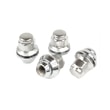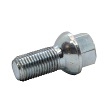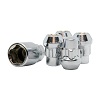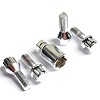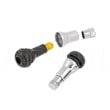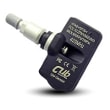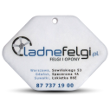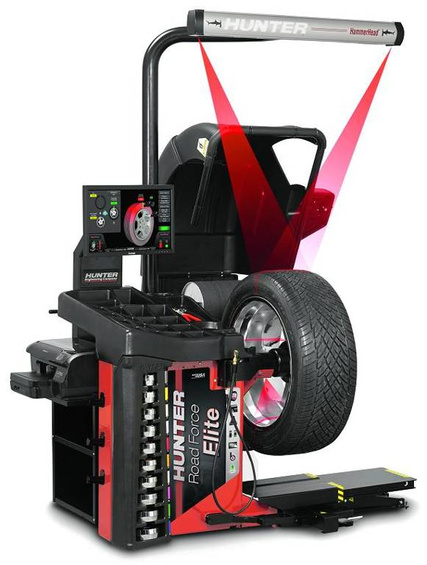WHEELS 18 Summer MERCEDES C BR204 C BR203 CLC CL203 Falken 225/40 R18
 17 YEARS ON THE MARKET
17 YEARS ON THE MARKET
Together, we develop the Polish economy
 SECURITY
SECURITY
The regulations meet the Trusted Shop quality criteria
 QUALITY CERTIFICATE
QUALITY CERTIFICATE
Alloy wheels have ISO, VIA JWL certificates proving their high quality
 GUARANTEED QUALITY
GUARANTEED QUALITY
Aluminum Rims are covered by a 3-year warranty
 STATIONARY SHOPS
STATIONARY SHOPS
Opportunity to look at the goods closely, direct contact with an expert
In a set



Tech specs:

The model:determines the appearance of the rim. By entering the model in the LadneFelgi.pl store search engine, you can search for rims in different colors and with other parameters.

Rim size: refers to the diameter of the rim given in inches (1 inch = 2.54 cm). The possible sizes are predetermined by the vehicle manufacturer. Using rims smaller than those specified by the manufacturer is not allowed.

Rim width: is measured between the rim flanges. The dimension is in inches. When choosing tires, take into account the width of the rim and the car manufacturer's recommendations.

Wheel PCD: determines the number and spacing of mounting holes. This is the diameter of the circle with the centers of these mounting holes. The diameter of the circle is given in millimeters.


ET, offset: is not a strictly defined parameter, such as spacing. It depends on the width of the rim. ET is given in mm. The smaller the offset, the more the rim is, which increases the wheelbase, positively influencing the car's stability. The service book or ASO provides only the parameters of the currently installed rims.

Center bore: it is the dimension of the rim center hole diameter given in mm. If the car has a smaller hub diameter, centering rings are used. The ring is used to center the rim in relation to the car's hub. After screwing it, no force acts on it. It is a safe solution used by all rim manufacturers.

Color: determines the colors in which the offered item was made. Pictures are taken under natural lighting.

Certificates: confirm the compliance of the wheels with applicable quality and safety standards based on durability and quality tests. Some certificates, such as TÜV, additionally confirm that the wheels meet specific technical requirements related to compatibility with a particular vehicle model.

The working shape of the screw head, must correspond to the shape of the mounting hole made in the rim. We distinguish between spherical( spherical), conical or flat sockets for flat rim holes. The standard is a cone with an angle of 60 degrees


TPMS Sensors - the parameter determines whether the TPMS pressure sensors can be used with a given rim.

Product presentation on YouTube: copy the link and paste it into your browser's address bar to watch the 360° wheel video.

Tire size: this is the tire size designation, for example 225/45 R18:
225 – tire width in millimeters,
45 – aspect ratio, meaning the sidewall height is 45% of the tire width,
R – indicates radial tire construction,
18 – inner diameter of the tire (rim size), expressed in inches.

Tire profile: is the percentage ratio of the sidewall height to the tire's width. A lower profile means a smaller sidewall height relative to the width – such tires usually offer better handling precision, but at the cost of comfort and increased susceptibility to damage. A higher profile provides better shock absorption and greater ride comfort, although it may slightly reduce cornering stability.

Tire manufacturer: a company responsible for designing and producing tires. Each manufacturer uses its own technologies and rubber compounds, which affect the quality, performance, and durability of the offered tires.

Tread pattern refers to the specific design of the arrangement of blocks, grooves, and sipes on the tire surface. Its construction affects grip, water evacuation, and noise levels, as well as the tire’s adaptation to different driving conditions (e.g., dry, wet, or winter surfaces).

The speed index is a letter designation that indicates the maximum speed at which a tire can safely operate while maintaining the allowable load. According to the law, a tire should have at least the speed index (and load index) recommended by the vehicle manufacturer. It is possible to use tires with a higher speed index, which is often permitted by the vehicle manufacturer.

The load index (also known as the load rating) is a numerical indicator that specifies the maximum permissible load a single tire can carry at the recommended pressure and within its speed rating. Each numerical load index corresponds to a specific weight (given in kilograms), e.g., 91 means 615 kg.

Tire season: indicates the weather conditions for which the rubber compound and tread pattern are designed. Summer, winter, or all-season. A compromise between summer and winter tires; they perform well in various climatic conditions, but in extremely hot or winter climates they are significantly inferior to dedicated tires.

The tyre label (EU label) is an official marking introduced in the European Union that provides information about the basic parameters of a tyre and its impact on safety and the environment.

In Poland, the PN-C94300 standard "Tyres – packaging, storage and transport" is in force. According to its guidelines, tires can be placed on the market, stored, distributed, and sold without restrictions for up to 3 years from their production date. The tires retain all their safety and performance properties.

Fuel efficiency (rolling resistance): rated from A (lowest rolling resistance, highest efficiency) to E (highest rolling resistance). A change of one class (e.g. from B to A) can result in 1–2% fuel savings. For someone driving around 30,000–40,000 km annually, this could mean saving several hundred PLN on fuel each year.

Wet grip
Indicated by letters from A (best grip) to E.
It affects braking distance and driving stability in rainy conditions.
A ↔ B: a difference of a few meters between classes.
A ↔ E: the difference can be several meters (up to around 18 m) at a speed of 80 km/h.

In the EU, noise levels are labeled with letters: A, B, or C (A – quietest). In addition to the letter, a specific value in decibels is given, allowing for more accurate comparison between tyres. A 3 dB difference equals a doubling/halving of acoustic energy (sound intensity), but our subjective perception of loudness changes noticeably only at around a 10 dB difference (then the sound seems about twice as loud or quiet).






 Nowoczesny design
Nowoczesny design Idealne dopasowanie
Idealne dopasowanie Duża wytrzymałość
Duża wytrzymałość Wysyłka gratis w 24h
Wysyłka gratis w 24h
 Indywidualny projekt
Indywidualny projekt Dedykowany opiekun
Dedykowany opiekun
